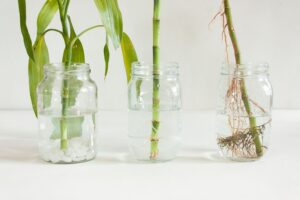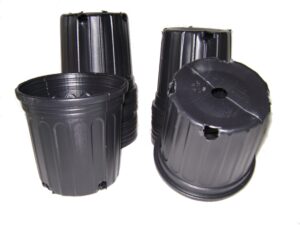
Jade plants, with their thick, succulent leaves and resilience, are popular choices for indoor greenery. However, even these hardy plants can struggle and show signs of distress. In this guide, we will explore how to identify a dying jade plant and implement effective strategies to revive it back to health.
I. Understanding the Signs of a Dying Jade Plant
Yellowing or Dropping Leaves One of the most common signs of a struggling jade plant is the yellowing or dropping of leaves. This can be caused by various factors such as overwatering, underwatering, or root rot, all of which can lead to stress and decline in the plant’s health.
Soft or Mushy Stem A soft or mushy stem is another indicator that your jade plant is in trouble. This softness is often a result of overwatering, which causes the roots to become waterlogged and leads to root rot. Without intervention, the plant’s stem may collapse, further jeopardizing its survival.
Lack of Growth or Wilting A jade plant that is not thriving may exhibit a lack of growth or wilting of its leaves. Poor soil drainage, insufficient light, or other environmental factors may contribute to these symptoms, signaling the need for immediate attention to prevent further decline.
II. Assessing the Root Health
Removing the Plant from its Pot To assess the root health of your jade plant, carefully remove it from its pot, taking care not to damage the roots in the process. Gently loosen the soil around the roots and extract the plant from its container.
Inspecting the Roots Once the plant is removed, carefully inspect the roots for signs of rot or decay. Healthy roots should be firm and white, while diseased roots may appear dark, mushy, or have a foul odor.
Trimming and Treating Damaged Roots If you identify any damaged or diseased roots, trim away the affected portions using clean, sharp scissors or pruning shears. Afterward, treat the remaining roots with a fungicide to prevent further spread of disease.
III. Repotting and Adjusting Care Routine
Selecting the Right Pot and Soil Choose a new pot that provides adequate drainage and room for the jade plant’s roots to grow. Use a well-draining potting mix specifically formulated for succulents to ensure proper soil aeration and moisture retention.
Repotting the Jade Plant Carefully repot the jade plant into its new container, ensuring that the roots are spread out evenly and covered with fresh soil. Avoid compacting the soil too tightly, as this can hinder drainage and lead to waterlogged roots.
Adjusting Watering and Light Conditions After repotting, adjust the watering and light conditions to promote recovery. Allow the soil to dry out between waterings to prevent overwatering, and place the plant in a location with indirect sunlight to avoid sunburn.
IV. Implementing a Recovery Plan
Gradual Introduction of Water and Fertilizer Gradually reintroduce water and fertilizer to the jade plant, starting with small amounts and increasing gradually as the plant begins to recover. Use diluted fertilizer solutions to avoid overwhelming the plant with nutrients.
Monitoring Progress and Adjusting Care as Needed Monitor the jade plant closely for signs of improvement, such as new growth or increased vigor. Adjust the care routine as needed based on the plant’s response, making sure to provide consistent care and attention.
Patience and Persistence Recovering a dying jade plant requires patience and persistence. Understand that it may take time for the plant to fully recover, and continue to provide the necessary care and support throughout the process.
V. Preventative Measures for Long-Term Health
Establishing a Regular Care Routine Establish a regular care routine for your jade plant, including consistent watering, proper light exposure, and occasional fertilization. Consistent care will help maintain the plant’s health and prevent future issues.
Avoiding Common Mistakes Learn from past mistakes and avoid common pitfalls such as overwatering, poor drainage, or excessive fertilization. By understanding the specific needs of your jade plant and providing appropriate care, you can help ensure its long-term health and vitality.
Regular Inspections and Maintenance Perform regular inspections of your jade plant, checking for signs of stress, disease, or pest infestation. Prune away any dead or damaged foliage, and address any issues promptly to prevent them from escalating.
Reviving a dying jade plant requires careful attention to its needs and proactive intervention to address underlying issues. By following these steps and providing the necessary care and support, you can help your jade plant bounce back to vibrant health.






